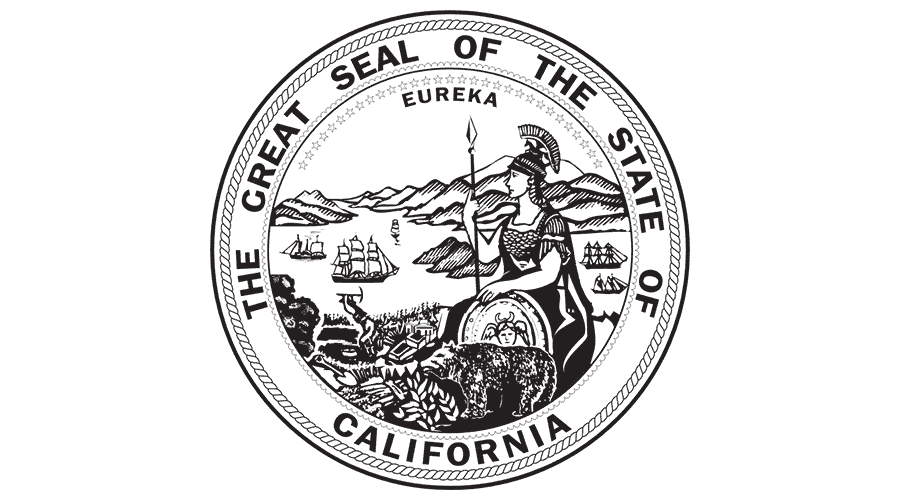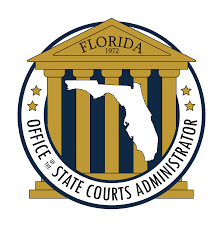






5-Star Service, Trusted & Loved by Hundreds
Your Appraiser Search Ends Here
Your Appraiser Search Ends Here
.avif)

Nationwide Coverage – Appraisals Anywhere in the US

Get it done Onsite or Online

Any Asset, Covered

Defensible for Any Purpose
Frequently Asked
Questions
No Frequently Asked Questions Found.
The fundamental principle behind estate tax involves assessing the total value of an individual's estate at the time of their passing. As of 2023, the federal estate tax exemption stands at $12.92 million for individuals and $25.84 million for married couples, meaning estates below these thresholds typically avoid federal taxation. However, the landscape becomes more complex with state-level estate taxes, which may have significantly lower exemption limits.
Calculating estate tax involves a multi-step process that begins with determining the gross estate value. This comprehensive valuation includes diverse assets such as residential properties, financial accounts, investment portfolios, life insurance policies, and personal valuables like artwork or jewelry. After establishing the gross value, specific deductions are applied, including outstanding debts, funeral expenses, and estate administration costs.
The resulting taxable estate is then subject to progressive tax rates, where the tax percentage increases proportionally with the estate's total value. This intricate system underscores the importance of strategic estate planning. Individuals can potentially minimize tax liability through carefully considered approaches like strategic asset gifting, establishing trusts, or making charitable contributions.
While estate tax may seem daunting, it serves as a mechanism for wealth redistribution and government revenue generation. Proactive planning and professional guidance can help individuals navigate these complex regulations, ensuring a more efficient transfer of assets to intended beneficiaries while potentially reducing tax burdens.
When a loved one passes away, the executor faces the intricate task of determining the estate's total value precisely at the date of death. A professional appraisal becomes indispensable in this process, offering an objective and defensible valuation that meets strict IRS requirements. This detailed assessment helps prevent potential legal complications and ensures accurate tax reporting.
The valuation process goes beyond mere number-crunching. It provides a clear snapshot of an estate's fair market value, which is crucial for calculating potential tax liabilities. Different types of assets—from real estate and business interests to personal property and investments—require specialized expertise to evaluate accurately.
Importantly, these appraisals can reveal potential tax-saving opportunities. Skilled appraisers can identify valuation discounts for specific assets, potentially reducing the overall tax burden. This might include considerations for minority ownership interests, lack of marketability, or other nuanced financial factors that can impact an estate's taxable value.
For families navigating the emotional challenges of estate settlement, a professional appraisal offers transparency and objectivity. It provides a neutral foundation for asset distribution, helping to minimize potential conflicts among heirs and ensuring a fair assessment of the estate's worth.
Beyond immediate tax implications, these appraisals serve as a critical tool for long-term financial planning. They provide valuable information for future decision-making, helping families and financial advisors develop strategic approaches to estate management and potential asset transitions.
An antique jewelry appraisal is a meticulous professional assessment that determines the comprehensive value of jewelry pieces typically dating back at least 100 years. This specialized evaluation serves critical purposes ranging from insurance documentation to estate planning and understanding the intrinsic historical and monetary worth of cherished collections.
Certified appraisers conduct an in-depth examination that considers multiple sophisticated criteria. Provenance plays a pivotal role, with the piece's historical lineage and documented ownership directly influencing its market value. Experts carefully analyze the materials, examining gemstone characteristics such as carat weight, clarity, color, and cut, while simultaneously evaluating the specific metals and unique components used in the jewelry's construction.
Craftsmanship emerges as another crucial evaluation factor. Appraisers meticulously inspect construction techniques, signature marks, and design elements to determine the piece's artistic and technical quality. Renowned manufacturer or artisan signatures can significantly elevate a piece's monetary and collectible value.
The physical condition of the jewelry undergoes rigorous scrutiny, with even minor details potentially impacting its overall worth. Pristine pieces naturally command higher valuations compared to those showing extensive wear or requiring substantial restoration. Contemporary market trends and collector interests further modulate the potential value, reflecting the dynamic nature of antique jewelry valuation.
Professional appraisals culminate in a comprehensive written report that precisely documents the findings and assigns a fair market value. This authoritative document becomes an essential tool for insurance purposes, estate valuations, potential sales, and preserving the historical narrative of exceptional jewelry pieces.
The most credible appraisals are conducted by accredited professionals who adhere to stringent industry standards and national guidelines. Their expertise ensures a nuanced, accurate assessment that provides owners with genuine insight into their jewelry's historical significance and monetary value.
Online antique jewelry appraisals have become increasingly sophisticated, offering a convenient and professional alternative to traditional in-person assessments. The digital appraisal process combines detailed documentation with advanced technological tools to provide comprehensive evaluations.
Typically, the online appraisal requires submitting high-resolution photographs and comprehensive documentation about the piece. Appraisers seek critical details including:
- Precise age and historical background
- Specific materials and construction techniques
- Unique identifying markings or engravings
- Historical documentation or previous assessments
Many professional appraisers now utilize video conferencing platforms to conduct interactive assessments. These live sessions allow for real-time examination, enabling appraisers to ask detailed questions and gain nuanced insights that static images might not reveal.
The remote appraisal method offers unparalleled flexibility for individuals with limited mobility or those located in areas without immediate access to specialized antique jewelry experts. Clients can receive professional-grade assessments from the comfort of their home while maintaining the highest standards of professional evaluation.
Digital appraisals serve multiple purposes, from establishing insurance valuations to understanding the historical and monetary significance of inherited or collected pieces. The process ensures comprehensive documentation that meets industry standards, providing clients with authoritative and detailed assessments of their antique jewelry.
Antique jewelry appraisers are specialized professionals who assess the value of historically significant jewelry pieces, each bringing distinct expertise to the evaluation process. These experts differ in their focus, methodology, and depth of knowledge, catering to various aspects of antique jewelry valuation.
General jewelry appraisers provide comprehensive assessments, drawing on broad knowledge of materials, designs, and market trends. They evaluate pieces holistically, considering factors like condition, authenticity, and current market value across different periods and styles.
Gemological experts dive deep into the scientific analysis of jewelry components. Certified professionals meticulously examine gemstones, analyzing origin, cut, clarity, and weight. Their technical expertise allows for precise identification and valuation of the intricate stone elements in antique pieces.
Specialized antique appraisers offer a broader historical perspective, understanding the contextual significance beyond monetary worth. They bring deep knowledge of historical periods, design movements, and cultural influences that impact a piece's overall value and collector interest.
Certification specialists focus on creating detailed, authoritative documentation. Their work is critical for insurance purposes, legal transactions, and providing collectors with comprehensive reports that verify a piece's authenticity, characteristics, and appraised value.
Estate appraisers play a crucial role in inheritance and asset distribution. They navigate the complex landscape of generational jewelry, identifying potentially overlooked valuable pieces and ensuring fair assessment during estate settlements.
Each type of appraiser contributes unique insights, collectively forming a comprehensive ecosystem of expertise in understanding and valuing antique jewelry.
Antique jewelry appraisals provide critical insights for owners, offering far more than a simple monetary valuation. These professional assessments serve multiple essential purposes across personal, financial, and legal domains.
Insurance protection represents a primary motivation for obtaining an appraisal. Accurate documentation ensures that valuable pieces can be fully replaced or compensated in cases of loss, theft, or damage. Without a comprehensive professional evaluation, owners risk significant financial vulnerability.
Estate planning becomes considerably more straightforward with a precise appraisal. When distributing assets among heirs, a professional assessment eliminates ambiguity about an item's worth, facilitating fair and transparent inheritance processes. This documentation helps prevent potential family disputes and ensures clear intentions are honored.
Tax considerations also make appraisals invaluable. For significant donations or complex financial transactions, a qualified appraisal provides essential documentation that meets regulatory requirements. This becomes particularly crucial when claiming deductions or managing complex asset transfers.
Resale and market positioning benefit substantially from professional evaluations. Collectors and investors gain nuanced understanding of an item's current market value, enabling more informed decisions about potential sales, auctions, or long-term preservation strategies.
During legal proceedings such as divorces or inheritance disputes, a professional appraisal serves as an objective, authoritative reference point. The detailed documentation can provide crucial evidence, helping resolve complex asset-related conflicts with clarity and precision.
For serious collectors and cultural institutions, appraisals offer deeper insights beyond monetary value. They illuminate historical context, craftsmanship significance, and potential conservation needs, supporting more comprehensive collection management approaches.
Understanding an antique jewelry piece's true value extends far beyond simple curiosity—it represents responsible ownership, financial prudence, and historical appreciation.
Understanding Antique Jewelry Appraisals
Antique jewelry appraisals are essential for determining the value of heirlooms, whether for gifting or for estate tax purposes. Understanding the intricacies involved in these appraisals can not only provide clarity on the financial worth but also help in preserving the history and narrative behind the pieces. It is crucial to recognize that antique jewelry differs from contemporary items, often carrying unique attributes like the craftsmanship, material rarity, and historical significance that can greatly influence value.
An appraisal typically involves a thorough examination of the piece's condition, brand, age, and any intrinsic features such as gemstones or design elements. Experienced appraisers rely on various tools and methods, including market analysis and price comparisons, to arrive at a fair and accurate valuation. This process not only highlights the monetary aspects but also provides insight into the jewelry’s provenance, unlocking stories that are essential to its legacy.
When considering an appraisal for gift or estate tax purposes, it is important to understand the timing and documentation involved. For gifts, valuations may be necessary to ensure that the proper tax implications are understood, particularly if the value exceeds certain limits set by taxation authorities. In estate planning, accurate appraisals can help in equitable distribution among heirs and ensure compliance with legal requirements during the estate settlement process. Overall, understanding antique jewelry appraisals empowers individuals to make informed decisions regarding their treasured possessions.
Why Appraisals are Important for Antique Jewelry
Antique jewelry appraisals hold significant importance for various reasons, particularly for gift giving or estate tax purposes. Understanding the value of these pieces can help individuals make informed decisions, ensuring that the jewelry is recognized for its historical and monetary worth. Antique jewelry is often influenced by factors such as craftsmanship, age, and market demand, all of which can fluctuate over time. An accurate appraisal provides clarity on these dimensions, enabling owners to preserve their assets and utilize them effectively in both personal and financial contexts.
Moreover, appraisals are essential for insurance coverage. In the event of loss, theft, or damage, having a certified appraisal is crucial for filing claims and receiving adequate compensation. Additionally, detailed appraisals play a pivotal role in estate planning by determining the fair market value necessary for tax obligations. This process ensures that both heirs and tax authorities acknowledge the true worth of the jewelry, thus aiding in the smooth transfer of assets while minimizing potential disputes.
Types of Appraisals: Gift vs. Estate Tax
When it comes to antique jewelry appraisals, understanding the differences between gift tax and estate tax appraisals is crucial. Gift tax appraisals are conducted when an individual gifts jewelry to another person, and the value must be determined to establish any potential tax liability. This appraisal will typically reflect the fair market value of the piece at the time of the transfer, which can serve to guide individuals in ensuring compliance with IRS regulations regarding gifts above a certain threshold in value.
On the other hand, estate tax appraisals are performed as part of the estate settlement process when a person passes away. Here, the value of the antique jewelry is assessed to determine the total value of the decedent's estate for tax purposes. An accurate appraisal is essential not only for tax compliance but also for the fair distribution of assets among beneficiaries, as it helps establish the jewelry's value at the time of death, which can differ significantly from its market value at the time of gifting.
Key Elements of an Antique Jewelry Appraisal
When appraising antique jewelry, several key elements come into play that can significantly impact its value. Expert appraisers typically evaluate the piece's age, origin, and craftsmanship, as these factors contribute to the jewelry's historical significance. Additionally, the materials used—such as the type of metal, gemstones, and any hallmarking—also play a crucial role in determining its worth. Understanding these elements allows for a comprehensive assessment that aligns with market expectations and current trends in vintage jewelry valuation.
Another important aspect of antique jewelry appraisals is the condition of the piece. Every scratch, dent, or missing gemstone can affect both aesthetic appeal and market value. Furthermore, provenance, or the history of ownership, can enhance the worth of the item, particularly if it once belonged to a notable figure or has an intriguing backstory. A meticulous evaluation by a qualified appraiser ensures that all these elements are taken into account, providing a fair and accurate representation of the jewelry's worth.
How Jewelry Value is Determined
The value of antique jewelry is primarily determined through a combination of factors including its age, condition, craftsmanship, and rarity. Age plays a vital role, as pieces from renowned periods like the Victorian or Art Deco often carry significant historical value. The condition of the item is equally crucial; well-preserved jewelry with minimal wear and tear is valued higher than items requiring extensive repairs. Additionally, the level of craftsmanship, such as intricate detailing and use of quality materials, can drastically elevate a piece’s market worth.
Another important consideration in determining the value of antique jewelry is the demand for specific styles or designers among collectors. Certain gemstones, such as diamonds, sapphires, and emeralds, also contribute significantly to the overall appraisal value, especially if they are of high quality and possess rare characteristics. Market trends, influenced by fashion movements and collector preferences, can further impact values dramatically, making it essential for appraisers to stay informed on current market conditions. All these elements combined will lead to a comprehensive and accurate valuation of antique jewelry for purposes such as gifting or estate taxation.
The Role of Gemstones in Appraisals
Gemstones play a critical role in antique jewelry appraisals, significantly influencing the overall value of the piece. The quality, rarity, and historical significance of the gemstones can enhance the allure and appreciation of the item. Appraisers carefully evaluate factors such as cut, clarity, color, and carat weight to determine a gemstone’s worth, along with its provenance and market demand, which may fluctuate over time based on trends and consumer preferences.
In addition to their inherent characteristics, the placement and setting of gemstones within antique jewelry also contribute to their appraisal. Unique craftsmanship and design elements are evaluated to assess how well the gemstones are showcased, which can amplify their beauty and desirability. Jewelry that showcases a more intricate setting, or utilizes rare gemstones in innovative designs, often commands higher appraisal values due to their complexity and artistic merit.
Understanding the historical context of the gemstones can further enhance the appraisal process. Certain gemstones may have celebrated narratives or cultural significance that adds layers to their value, particularly in antique pieces that reflect specific eras or movements in jewelry design. An appraiser’s expertise in the history of the gemstones involved ensures a more accurate and comprehensive appraisal, ultimately aiding in making informed decisions for gifts or estate tax considerations.
Appraisers Credentials and Qualifications
When seeking an appraisal for antique jewelry, it is crucial to ensure that the appraiser possesses the appropriate credentials and qualifications. Certified appraisers often hold designations from recognized professional organizations, such as the American Society of Appraisers or the International Society of Appraisers. These certifications require appraisers to undergo rigorous training and adhere to ethical standards, ensuring a high level of expertise in evaluating jewelry that may hold significant historical and financial value.
In addition to formal certifications, experience in the field is a key indicator of an appraiser's competence. An appraiser with a strong background in antique jewelry will be familiar with various styles, materials, and market trends, providing a more accurate and reliable valuation. Many reputable appraisers also possess extensive knowledge of gemology, which can be invaluable when assessing the quality and authenticity of gemstones in antique pieces.
It is also advisable to consider an appraiser's specialization in antique jewelry, as this can further enhance the quality of the appraisal. Specialization indicates that the appraiser has dedicated significant time and resources to understanding specific types of jewelry, trends, and valuation methods. By selecting a qualified appraiser with a solid background in antique jewelry, clients can be more confident in receiving an accurate and thorough assessment, which is essential for gifts or estate tax purposes.
Preparing Your Antique Jewelry for Appraisal
When preparing your antique jewelry for appraisal, the first step is to gather all relevant documentation. This includes any certificates of authenticity, original receipts, previous appraisals, or any information regarding the jewelry's provenance. Such documents can significantly enhance the appraisal process by providing verifiable information about the piece's history and value.
Next, it's essential to clean your antique jewelry thoughtfully. While you want to present it in the best light possible, take care not to damage any delicate materials or settings. A gentle cleaning with a soft cloth can help, but avoid harsh chemicals and ultrasonic cleaners, as these may irreparably harm intricate designs or gemstones.
Finally, consider scheduling a professional cleaning or consultation with a specialized jeweler prior to the appraisal. This can help ensure that your jewelry is not only visually appealing but also that any potential issues, such as loose stones or weak clasps, are addressed. By taking these steps, you will facilitate a more accurate and comprehensive appraisal, providing the appraiser with all necessary information to determine the true value of your antique pieces.
Common Challenges in Antique Jewelry Appraisals
Antique jewelry appraisals present several unique challenges due to the intricacies of both the items being assessed and the market conditions. One significant hurdle is determining the provenance of the piece, which can greatly impact its value. Without clear documentation of an antique's history, appraisers may struggle to establish authenticity, leading to potential discrepancies in valuation.
Another challenge lies in the subjective nature of valuing antique jewelry. Factors such as artistic merit, craftsmanship, and emotional significance can vary widely from appraiser to appraiser, resulting in differing opinions on the item's worth. Additionally, the rare materials and intricate designs of antique pieces can complicate the appraisal process, as current market demand for such items can fluctuate unpredictably.
Furthermore, understanding the specific characteristics that define antique jewelry—such as age, style, and designer—adds another layer of complexity to the appraisal process. Appraisers must possess extensive knowledge of various historical periods and their corresponding trends to make informed assessments. Adequate training and industry experience are crucial to accurately appraising antique jewelry, ensuring that both gift and estate tax considerations are properly addressed.
What to Expect During the Appraisal Process
During the appraisal process for antique jewelry, appraisers usually begin by assessing the piece's overall condition and authenticity. They closely examine elements such as the materials used, craftsmanship, age, and historical significance, which contribute to the item’s market value. Documentation, including previous appraisals or certificates of authenticity, may also be reviewed to provide context and support for the appraiser's evaluation. This thorough examination helps in establishing a clear picture of the jewelry's worth in terms of its intrinsic and aesthetic value.
Once the initial assessment is complete, appraisers will utilize various resources to research current market trends and pricing for similar antique pieces. This may involve comparing recent sales data from auctions or retail outlets tailored to antique jewelry. Following their analysis, appraisers compile their findings into a comprehensive report that details the item’s value, along with photographs and descriptions. This final appraisal document can serve multiple purposes, from estate planning to insurance coverage, ensuring that antique jewelry is accurately valued and properly preserved.
How to Use an Appraisal for Gift or Estate Tax Purposes
When it comes to determining the value of antique jewelry for gift or estate tax purposes, obtaining a professional appraisal is essential. An appraisal provides an unbiased assessment of the jewelry's worth based on various factors including market trends, condition, and historical significance. This valuation serves as a critical component for ensuring compliance with IRS regulations, as the value assigned to the jewelry directly influences the tax implications for both the giver and the recipient in the case of a gift, or the estate in the event of inheritance.
The appraisal process typically involves a thorough inspection and evaluation by a qualified appraiser who specializes in antique jewelry. They will consider elements such as the metal purity, the gemstones' quality, and any unique characteristics that contribute to the item's desirability. This detailed assessment not only establishes a fair market value but also results in a formal appraisal report that can be used for tax filings, estate settlements, or insurance purposes.
Having a certified appraisal is particularly important as it provides documentation that can defend the reported value in case of an audit by tax authorities. Moreover, it can facilitate smoother transactions or negotiations during the transfer of the jewelry as part of estate planning. Ultimately, understanding the intricacies of antique jewelry appraisals equips individuals with the knowledge needed to approach gift and estate tax situations with confidence.
Maintaining Documentation for Future Transactions
Maintaining accurate documentation for antique jewelry appraisals is crucial for various reasons, particularly for gift or estate tax purposes. Documentation serves not only as proof of value but also provides essential details about the piece, such as its origin, craftsmanship, and historical significance. This information can be invaluable should you need to sell the jewelry in the future, deal with insurance claims, or fulfill tax obligations. A well-documented appraisal can streamline these processes and reduce the risk of disputes or misinterpretations.
When preparing for an appraisal, collectors and heirs should gather all relevant information, including receipts, previous appraisals, and any certificates of authenticity. This not only aids the appraiser in determining the value but also helps to substantiate the information presented in future transactions. Additionally, maintaining clear records of any repairs, modifications, or restorations made to the jewelry can further impact its valuation. By keeping comprehensive documentation, individuals can ensure a smoother transaction process and uphold the integrity of their antique jewelry's value.
View all Locations
BEST-IN-CLASS APPRAISERS, CREDENTIALED BY:






.svg)










